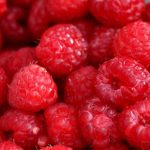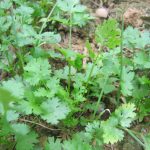How Healthy are Beets?
Table of Contents
The two most compelling reasons why beets have always been such a popular vegetable is their ease of maintenance in a garden and the fact that little of the plant goes to waste because most of it is perfectly edible. In fact, the leaves of the plant have more nutrients than the beet root itself.
If you think of a beet, you probably call to mind that plump root with a deep maroon shade, but actually beets can be a few different colors: there are yellow beets and even white beets. Although beets can survive very warm weather, they thrive at temperatures that hover around the mid-60’s (Fahrenheit). They can even survive a mild dip below freezing temperatures, as long as the exposure is not too prolonged.
Soil that has been tilled and that is provided plenty of moisture works best for beets, and they do well when placed in a row configuration with raised mounds. They are particularly sensitive to how acidic the soil is, however, and if the pH is too low (the soil is too acidic), they may not grow to their full size potential. You may need to add compost or some other dead organic material to the soil if you live in a very clay-heavy area. Another thing to keep in mind is any stone or other solid debris that may get in the way of the plant’s root system; you may want to remove this from the soil before you plant.
When you’re planting the seeds, place them with no less than one foot of space between them, and give them a depth of around one half-inch. The majority of beet types will be ready to consume between fifty to seventy days after planting, but there are some kind of beets that only require forty to fifty days. As the beets grow, you may want to add some mulch to both keep the weeds at bay and to keep the soil around your plants from drying out too quickly.
TYPES OF BEETS
– The beet variety known as the Burpee Golden is yellowish in color with a slight orange tint and round shape.
– The variety called Pacemaker III has a highly edible top with a round, smooth surface.
– The Red Ace hybrid is hardier than most, and can survive better in less ideal weather conditions. It reaches maturity faster, as well.
– The Little Mini Ball variety is tiny and round, with a diameter of only about one-and-a-half inches.
– One of the best varieties to preserve or to pickle is the Detroit Dark Red. Their leaves are excellent for cooking, and the root has a pleasantly sweet taste.
NUTRITIONAL CONTENT OF BEETS
1 cup of beets ( 136 g)
Amount Per Serving Percent Daily Value Calories (136) Vitamin A 1% Vitamin C 11% Fat (0g) 0% Fiber (4g) Iron 6% Sugars (9g) Protein (2g) HEALTH BENEFITS OF BEETS
In ancient times, beet root was used as a treatment for constipation and fever. In Medieval times, beets were used to for other digestive disorders and to fight scurvy. Beet leaves are said to be good for wounds when crushed and applied to them.
Besides being low calorie, no fat and high in fiber, beets also contain substantial amounts of Vitamin C, phosphorus, magnesium, iron and copper.
The high fiber content helps reduce triglyceride levels which means they are a heart healthy food. The Vitamin B folate amounts help in fetal spinal development, so beets are a good food to consume regularly during pregnancy, especially the first trimester.
Betaines in beets help stimulate liver function, and the beta-carotene in them is good for the eyes. The Vitamin C content is beneficial for the respiratory system and also helps capillary development. Some studies show higher potassium levels can lower the likelihood of a stroke. Beets are rich in potassium.
BEING CAREFUL WITH BEETS
The majority of edible roots contain a decent amount of starches and sugars. Beets are no exception. In fact, out of all the root vegetables, beets contain the most most sugar.
Also, if you are a person with certain medical conditions, like gall bladder problems or kidney disease—anything that can affect the “filtration” system of your body—keep in mind that oxalates may be found in beets, and these chemicals are the major culprits in kidney stones due to their tendency to form crystals.


















